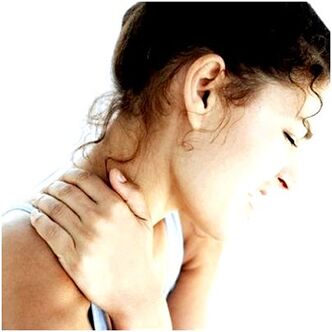
The osteochondrous process affects any of the spine or several at once.The lumbar and cervical vertebrae are most affected by pathologies, as the most susceptible to loads due to the anatomy of the human skeleton.
The consequences of spinal osteochondrosis in the cervical region cause the most inconvenience and potential complications, because the neck is an area rich in neuromusive highways, many of which feed the brain directly.
For this reason, clinical symptoms with cervical osteochondrosis are many associated with ischemia of brain areas.In addition, the nerve roots, which provide the sensitivity and motor activity of the hands and shoulder girdle, when squeezing with destroyed vertebrates can give a variety of symptomatic picture.
Below, consider the general clinic of osteochondrosis of the cervical spine.
Dizziness
Dizziness is also due to a violation of the blood flow to the organs of the inner ear, which ensures the balance of the body.Nystagm often joins dizziness - arbitrary fluctuations in the eye pupils to the sides.
Air lack
This sensation appears due to irritation of the ends of the diaphragmatic nerve.It is a component of the cervical nerve beam and is involved in the regulation of breathing, its depth and frequency.Patients complain about the inability to breathe in full chest.
In some cases, the symptom aggravates to severe shortness of breath and suffocation.For the same reason, breathing stops at night and snoring.
The disadvantage of oxygen due to breathing problems is ultimately the cause of increased fatigue, a decrease in concentration and memory problems.
Nausea
It is accompanied by belching air.Also due to problems with blood circulation in some areas of the brain and inner ear.Nausea is sometimes observed with indomitable vomiting provoked by movements of the head and body.The consequence of frequent nausea and vomiting is a decrease in appetite, weight loss, alimentary failure.
Problems with vision
“Flies” in the eyes, a decrease in visual acuity, fog in front of the eyes - these are all the symptoms due to ischemia of the area of the brain that is responsible for vision.
Patients with osteochondrosis complain less commonly of vision, since the lack of blood supply from the vertebral vessels is compensated by blood flow from the carbon arteries system.
Glasses and therapeutic gymnastics for the eye muscles do not solve the problem, usually vision improves after the treatment of osteochondrosis.
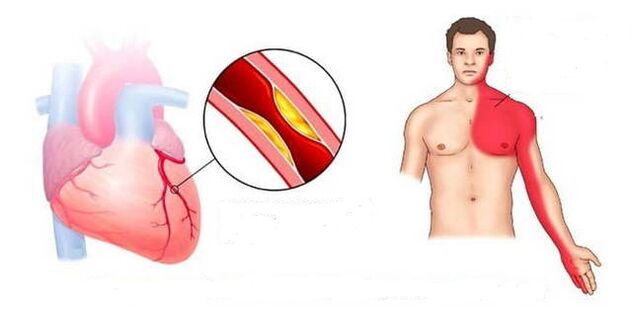
An unstable level of pressure is due to impaired blood flow in the oblong brain that is responsible for the functions of the vascular-motor center.
It occurs with spasm of the arteries of the brain due to the short-term stopping of blood flow along the vertebral arteries.
From the state of loss of the patient’s consciousness, you can quickly be removed by laying it so that the legs are slightly higher than the head - the flow of blood to the brain allows a person to lead to life.
After a fainting attack, reversible problems with speech and movements, due to a brief stop of blood flow, may be observed for some time.
Greenous symptoms
Often it may be the only sign indicating cervical osteochondrosis.They are expressed as a perspiration, dryness and feeling of a lump in the throat, difficulties with swallowing.Symptoms are associated with the compression of the nerve plexus responsible for the innervation of the pharynx.It is necessary to differentiate such manifestations from a similar clinic for inflammation or neoplasms.
The rise in body temperature for cervical osteochondrosis is not the most typical symptom, it is rarely and locally observed: in the cervical and collar area, with a slight redness of the skin.
The clinic of osteochondrosis in the cervical spine can be, firstly, of varying degrees of severity, it depends on the stage of development of pathology, also during periods of exacerbations they are brighter, and secondly, to form in certain syndromes.
Stage I
The beginning of degenerative processes in the cartilage of the vertebral discs.Symptoms are weak, sometimes it may not be observed at all.The first signs of osteochondrosis of the cervical spine:
- discomfort in the neck, arms, shoulders, sometimes turning into pain;
- headache;
- easy restriction of the motor activity of the neck;
- quickly passing visual impairment;
- Reducing the sensitivity of the skin of the collar area.
Important: these symptoms become more pronounced when tilting the head.
As a rule, in the first stage of osteochondrosis of the cervical region, patients do not go to the doctor, believing that all symptoms are associated with fatigue, stress, age, lack of sleep.
Stage II
At this stage, the protrusion of the vertebrates began, the intervertebral cracks narrow, the collagen fiber of the fibrous ring of the disk is destroyed.There are noticeable painful symptoms of a point nature due to the compression of the nerve trunks, intensifying during the movements of the neck and turns of the head.Here you can already suspect cervical osteochondrosis, the symptoms of which in the second stage are as follows:
- pronounced pain in the neck, sometimes with a crunch;
- The skin of the shoulders and hands loses the sensitivity almost completely;
- headaches are frequent, do not pass for a long time;
- visual impairment with "flies" in the eyes;
- ringing and noise in the ears;
- weakness of the muscles of the upper extremities;
- the clarity of tendon reflexes is reduced;
- shooting pain with dedication under the shoulder blade;
- the feeling of a lump in the throat, problems with swallowing;
- Sleep disorders, usually insomnia.
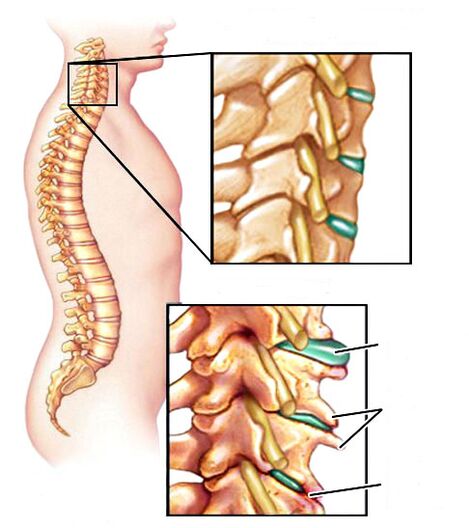
Long holding the head in one position leads to severe pain.At this stage of the development of the disease, patients are already coming to the doctor for help.
Stage III
The fibrous ring in the disk is destroyed, hernias are formed.In the third stage, there is a deformation of the spine, displacement and dislocations of the vertebrae due to their weak fixation.The symptoms are as follows:
- intensive, acute pain in the neck, collar zone, heart area;
- the sensitivity of the scalp on the back of the head, in the shoulder region, in the hands, up to the complete absence of;
- hernia of the cervical spine;
- paresis and paralysis of the upper extremities;
- Tendular reflexes are practically not observed.
This is a severe stage of the disease in which the patient is no longer able to support his head on his own.The spinal cord ischemia and the compression of the spine arteries lead to paralysis and paresis in other parts of the body and spinal stroke.
Non -specific and a large number of various symptoms that accompany osteochondrosis of the cervical spine make it difficult to diagnose and further treatment, since some of them can be a sign of completely different diseases.Symptoms of cervical osteochondrosis are formed in certain groups called syndromes.Their presence and severity may indicate a pathology in the cervical spine with an updated localization.
Clinical picture of osteochondrosis of the cervical spine - symptoms, signs
Osteochondrosis of the cervical region is a chronic, slowly progressive spinal disease, in which vertebrae, intervertebral joints and discs are affected and destroyed.The vertebrae from the first to the seventh, which belong to the cervical region, suffer.
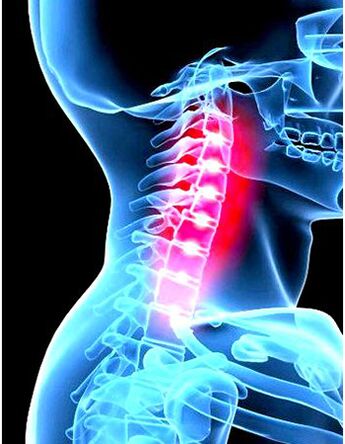
As the disease progresses, the intervertebral discs lose their elasticity and strength, flatten, relax, their amortizing properties worsen.Such deformation occurs due to changes caused by power disorders and tissue depletion.
These violations are one of the natural processes of aging of the body, but various overloads, posture disorders, injuries, congenital abnormalities of the spine and some other causes provoke early wear of cartilage and discs.
Pain can have different localization, they can be in the neck, in the occipital region, in the shoulder or upper limb.Pain in the shoulder or hand appear when the spine of the nerve innervates the upper limb is involved in the process.The pain in the occipital part of the head is caused by cramping of the neck muscles, which are attached to the occipital bone and circulatory disorders in this zone.
When symptoms occur:
- A decrease in sensitivity in the hand occurs when a spine is damaged, which contains sensitive nerves innervating the skin of the upper limb.
- The restriction of movements in the cervical spine and crunch during movements occurs due to a decrease in the height of the intervertebral disc, the appearance of bone growths on the bodies of the vertebrae and damage to the small joints between the cervical vertebrae.
- Dizziness, impaired coordination, weakness occurs in severe cases with a strong deterioration in the blood supply to the occipital fraction of the brain, cerebellum and trunk.
- Numbness of the language, decrease in hearing and vision
All these symptoms are due to the involvement of the vertebral artery in the process, which takes place in its own channel located in the transverse processes of cervical vertebrae.As a result of the development of cervical osteochondrosis, the formation of fibrous tissue, the vertebrae of the vertebrae, the blood flow in these arteries worsens, which leads to a deterioration in the blood supply to the occipital fraction of the brain and cerebellum.
Reasons
- excessive physical activity in sports or heavy physical labor;
- hereditary predisposition;
- hypothermia of the neck (walking in winter without a scarf);
- stress;
- work at the computer;
- obesity.
Some of the above causes cause osteochondrosis and other spine.
The degree of osteochondrosis is determined by the clinical picture and complaints of the patient.The concept of degree should not be confused with the stages of osteochondrosis.The stages will be discussed below.
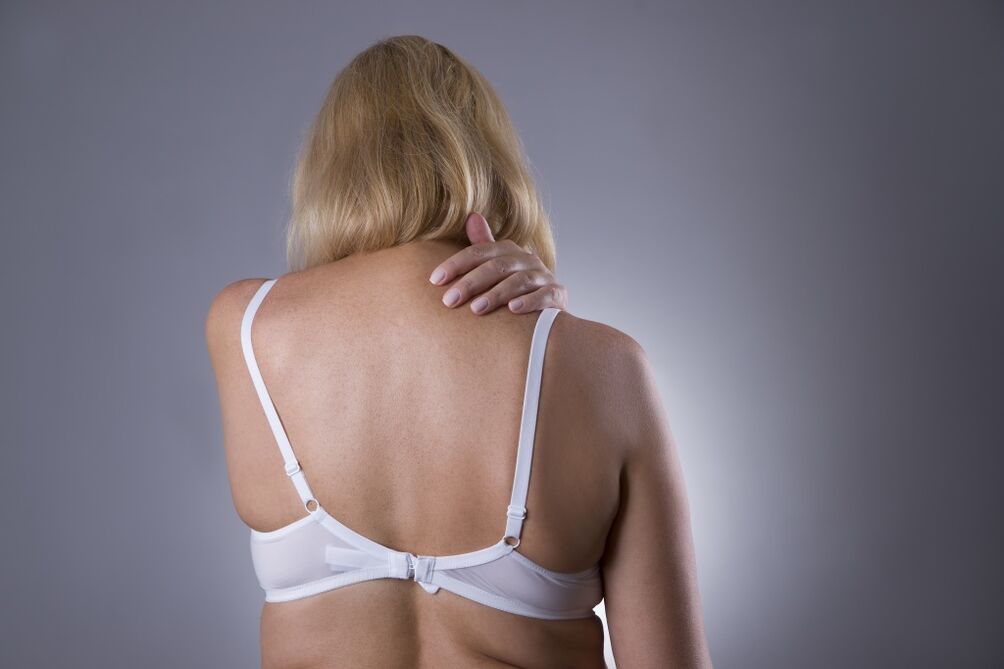
Considering and analyzing the procedure for the development of changes in the tissues of the vertebra, doctors distinguished several stages of osteochondrosis of the cervical region:
- Preclinic phase.Cervical osteochondrosis of the 1st degree is expressed by the displacement of the pulpoose nucleus to the side and the beginning of the destruction of the fibrous ring.Pain in this period may be absent, a small lordosis and difficulty in turning or tilting of the head is possible.
- Osteochondrosis of the cervical region of the 2nd degree is characterized by an increase in pathological destruction, the instability of the entire segment with subluxis, and a pain appears, sometimes giving out in the shoulder belt or arm.The patient complains of distraction, a deterioration in memory and attention.
- Osteochondrosis of the 3rd degree develops with a complete rupture of the fibrous ring.Neurological symptoms appear, sensitivity is disturbed.The pain in the third stage becomes constant and greatly bothers the patient.The mobility of the cervical segment worsens.
- Osteochondrosis of the neck 4 degrees.The final stage of the degenerative process.The intervertebral disc is completely replaced by connective tissue, all symptoms become more pronounced, a deterioration in the coordination of movements, ataxia is noted.
Depending on the localization of pain, the following types of disease are distinguished: radiculoichemia, cervicobrachialgia, cervicocranialia and cervicalgia.
According to the method of course, the disease is customary to divide into acute intervertebral osteochondrosis of the neck, which appears for the first time and chronic, stretching for years with constant remissions and exacerbations.
Which doctor treats cervical osteochondrosis?
The variety of symptoms, often hiding under the mask of another ailment, causes patients a logical question - which doctor to contact?When any pain in the neck, shoulders and hands or the occurrence of neurotic disorders, it is urgent to approach the neurologist or vertebrologist.
And to whom to contact if there are no such specialists in the local clinic?In this case, the ticket should be postponed to the therapist.The doctor will prescribe treatment or send a narrow specialization to the doctor.
Symptoms depending on the damaged vertebra
Separately, radicular syndromes can be distinguished, leading to one or another sensitive and motor disorders.They differ depending on what kind of vertebra squeezes the spinal root:
- C1: leads to numbness and impaired sensitivity in the back of the head;
- C2: pain in the parietal region and the back of the head;
- C3: speech impairment, sensitivity of the language, pain and decrease in sensitivity in the side where the spinal nerve is infringed;
- C4: pain in the heart, left hypochondrium, in the shoulder, shoulder blade, respiratory disorders, decrease in the tone of the neck muscles;
- C5: Pain in the shoulder in the outer area;
- C6: the pain that gives in from the forearm to the thumb of the hand, as well as from the neck on the shoulder blade;
- C7: the pain in the back surface of the shoulder, from the neck to the shoulder blade, gives in the forearm to 2-4 fingers of the hand;
- C8: pain from neck to shoulder, from forearm to the little finger.
Diagnosis of osteochondrosis
To make a diagnosis, instrumental examination methods are used:
- X -ray examination of the spinal department;
- myelography;
- Neurological survey of sensitivity, reflexes.
Additional methods prescribed for differentiation and clarification of the diagnosis, the stage of pathology include:
- computed tomography of the spine (CT);
- nuclear-magnetic resonance (JAMR);
- Magnetic resonance imaging (MRI).
During the examination with the conduct of neurological tests, the doctor will evaluate the degree of mobility and soreness of the neck, as well as impaired blood flow in the vertebral artery.
Cervical osteochondrosis requires not only the study of the vertebrae itself, but also nearby tissues, blood vessels, nerves.Only then can we judge the complete picture of pathological changes that occurred due to illness.
Diagnosis of cervical osteochondrosis begins with a visual examination and survey of the patient.The neuropathologist is interested in the conditions of life and labor of the patient, the presence of chronic ailments, nutrition and motor activity.
A preliminary diagnosis is confirmed by the conduct of instrumental research:
- X -ray in two projections;
- MRI;
- Ct;
- UZDS (duplex scanning).
Analysis of hormones is required for the fairer sex.Without it, the treatment of cervical osteochondrosis in women does not begin.
To exclude pathologies with such symptoms, a differential diagnosis is carried out with the appointment of additional consultations with a surgeon, gynecologist, cardiologist, ophthalmologist and lore.
Complications of osteochondrosis
Osteochondrosis of the cervical spine is dangerous with its complications.With the adverse development of the disease, squeezing the spinal artery can result in a stroke of the brain, persistent worsening of hearing and vision.
Often an intervertebral hernia, severe hypertension and numbness or cooling of the fingers join osteochondrosis.In women, complications of a neurological nature often develop - constant fatigue, lethargy, loss of performance, excessive resentment.
Non -compliance with prescribed treatment, prolonged avoidance of a doctor and lack of therapy of osteochondrosis contributes to the progression of the disease and provokes the development of complications, pathologies and new diseases, such as:
- hernia of intervertebral discs (hernia of the spine);
- protrusion;
- kyphosis;
- radiculitis;
- Salt deposits in the intervertebral space;
- spinal cord strokes;
- reduction in the muscle mass of the limbs, muscle atrophy due to impaired blood supply;
- paralysis of the lower extremities.
Despite the fact that the 4th degree of osteochondrosis can occur without pronounced symptoms and pain, neglected osteochondrosis is the most dangerous for the development of serious complications and can lead to disability of the patient.
Medical physical education
LFK for cervical osteochondrosis should be carried out outside acute exacerbation.The greatest effectiveness of this technique during the recovery period.During the implementation of the complex there should be no discomfort and pain!
| Exercise number 1 | Lying on your stomach, rest your hands on the floor, raise your head and a torso, your back should be straight.Stay in this position for 1-2 minutes.Slowly sink to the floor.Repeat 2-3 times. |
| Exercise number 2 | Lying on your stomach, stretch your arms along the body, turn your head to the left, try to touch the floor with your ear, then turn your head to the right.Repeat 6-7 times in each direction. |
| Exercise number 3 | In a sitting position, lean forward, and try to touch your chest with your head, then exhale, lean back and throw your head.Repeat 10-15 times. |
| Exercise number 4 | When sitting, put your palms to your forehead, put pressure on your palms on your forehead, and your forehead is on your palm.Continue this exercise for 30 seconds.Repeat 2-3 times. |
| Exercise number 5 | Slowly rotate your head first in one direction, then in the other direction.10 rotations in each direction.Make sure that there is no dizziness.When it appears, the exercise stops. |
Risk factors
The chances of getting osteochondrosis increase if you have:
- abnormalities of the development of the spine;
- excess weight;
- long physical exertion;
- bad habits (smoking);
- sedentary lifestyle;
- work, which implies the regular impact of vibration on the spine (for example, with drivers of vehicles);
- long stress, excessive nervous tension;
- local hypothermia;
- preceding injuries in the neck and nape;
- Autoimmune pathologies entailing the degeneration of cartilage.
Psychosomatics
The development of cervical osteochondrosis indicates the inability to competently withstand problems.Sometimes people become so strong and confident in their abilities that their stability before adversity is transformed into rigidity and lack of flexibility.In this case, attempts to turn their heads are accompanied by stiffness, convulsions and other unpleasant sensations.
Also, osteochondrosis can develop in people who are afraid of problems and do not know how to cope with them.In this case, the protective reflex of the mammal is triggered, and the head is literally drawn into the shoulders.This provision is considered unnatural, therefore, after some time, the muscles of the cervical region begin to hurt and deform.
Treatment
Treatment of cervical osteochondrosis depends on the stage of the disease.If at the first stage there is a sufficiently conservative, wandering treatment, then in the second and third stages the doctor’s task is, first of all, to stop the pain syndrome.Enhanced cases may require surgical treatment intended for decompression and stabilization of vertebrae.
Drugs
| Group | Description |
| NSAIDs (non -steroidal anti -inflammatory drugs) | Help to remove swelling and pain.The basis of the most commonly used drugs is such acting components as sodium diclofenac. |
| Vasodilative drugs | Contribute to improving blood circulation. |
| Sedatives, muscle relaxants | They are prescribed additionally to facilitate the general condition of the patient and reduce doses of the NSAID.Relieve at the same time nervous overstrain and muscle cramps, help to achieve a better therapeutic effect. |
At the end of the course of therapy, the NSAIDs should be purchased for a home first -aid kit, becausePain in the neck can be periodically returned (with stress, overstrain, weather change).Before taking any drugs, consult your doctor.
If a positive effect is not observed after a conservative treatment of a conservative treatment, the doctor may recommend the patient spinal fussia.
This procedure allows you to immobilize the affected spinal segment.
Its essence is to remove the intervertebral disk, decompression of the nerve root, the installation of the implant or the creation of the physiological height of the disk space.
The operation has a lot of side effects and contraindications.So, it can cause vertebrogenic disability.That is why surgery is carried out in extreme cases.
Massage with cervical osteochondrosis allows you to achieve noticeable improvements.It is important that the procedure is performed by a professional: inept movements in the area of the cervical spine can aggravate the situation.Movements should affect the collar zone, the cervical region and part of the back.
Pay attention to the technique of performing exercises for the treatment of cervical osteochondrosamassage for osteochondrosis implies the alternation of the following actions.
- Stroking.The masseur affects the surface layers of the skin, moving from the head to the upper third of the middle of the back.At the same time, palms or fingertips work.
- Squeezing.Deep layers of the skin located in the upper third of the back are exposed.In this case, the index and thumb of the hands across the neck are carried out to take the skin.Fabrics adjacent to the vertebrae are not involved in this process.
- Trituration.It is carried out to warm up the skin, increase blood flow in the collar area.The procedure must be performed extremely carefully.It is forbidden to influence the spinous processes of the vertebrae.Sometimes rubbing is replaced with circular strokes or movements resembling sawing.
- Kneading.It affects deeply lying fabrics, therefore it has a limited value.It can aggravate the pathology.
During massage, the patient should lie on his stomach, in extreme cases, sit.
Prevention

For the prevention of the disease, it is recommended:
- For the health of the spine, it matters on which pillow passes to sleep on an orthopedic pillow and mattress;
- take a hot shower daily for 10 minutes;
- visit a bathhouse or sauna (relieves cramps of the neck muscles);
- avoid sharp tilts and turns of the head;
- walk more on foot, do yoga and swimming;
- with “sitting” work, make five -minute breaks every hour (you need to walk during breaks, tilts with a body and head in different directions);
- Avoid increased load on the spine: classes with weights, jumps, running;
- choose chairs and chairs supporting the spine;
- abandon addictions, such as smoking, alcohol abuse;
- Drink at least one and a half liters of water per day.
Eating with cervical osteochondrosis is recommended often (at least five times a day) and in small portions.Preference should be given to steamed or cooked dishes.Salads need to be seasoned with olive oil.

























